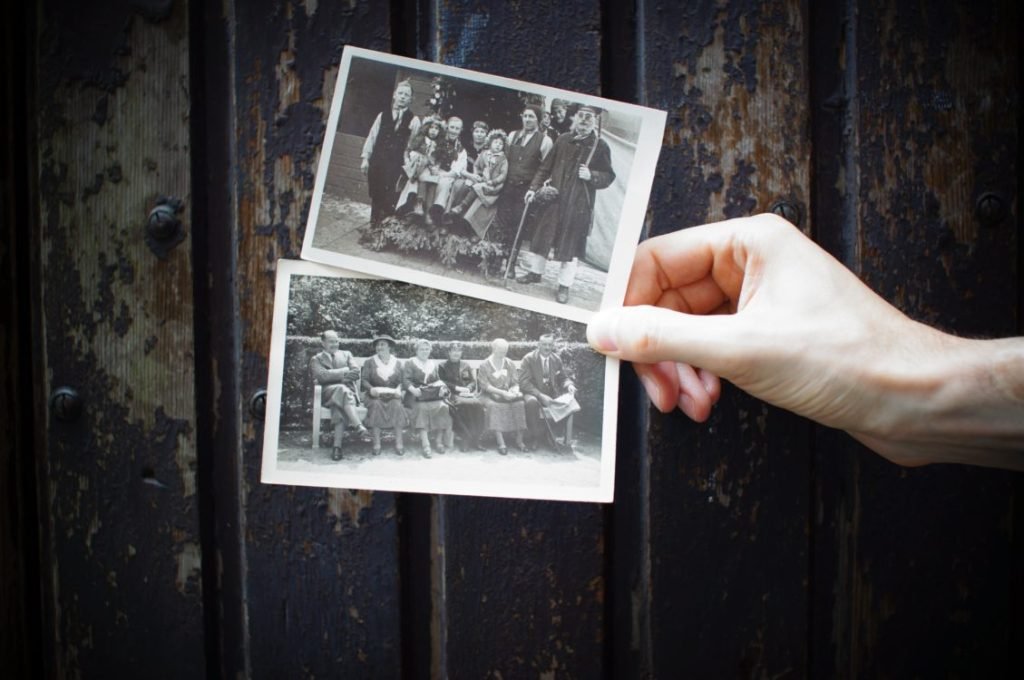When a person obtains lawful permanent residency status (aka LPR status or gets a green card) through marriage, he/she may be considered a “conditional” lawful permanent resident. This means that the green card is good for 2 years versus the traditional 10 years. Why is this you may ask? This is a way for the U.S. government to weed out marriage fraud. They want to make sure a person did not get married for the sole purpose of getting a green card.
There have been numerous news stories about marriage fraud rings where a foreign-born person will pay tens of thousands of dollars to a U.S. citizen to marry him/her solely so he/she can get a green card. In other scenarios, money may not be involved, but a U.S. citizen friend is willing to help another friend get a green card and they decide to get married just so a green card can be obtained.
In either scenario, this should never be done. If marriage fraud is found, it comes with serious consequences, one is never being able to apply for any type of U.S. immigration benefit again, such as lawful permanent residency, or even a visa to enter the U.S.
Below is an explanation of what you must do if you have been granted the 2-year conditional green card.
Understanding Form I-751: Petition to Remove the Conditions of Residence
If you received your lawful permanent residency status through marriage and were married for less than 2 years when you received this status, you will be granted “conditional residency.” If this situation applies to you, you will have to submit the I-751 petition. This step is a must for you to maintain legal status in the U.S.
Who May Use Form I-751
In general, if you were granted conditional resident status for marrying a U.S. citizen or lawful permanent resident, then you must file to remove the conditions on your residence 90 days prior to the expiration date of your conditional green card.
- Dependent Children
If you have dependent children who were granted conditional resident status within 90 days after you were granted status, you may petition to have their conditions removed on your Form I-751. You will use Part 5 of the form to list their names and Alien Registration Numbers. If they were not granted status on the same day or within 90 days after you were granted status, or if their conditional resident parent is no longer living, then the dependent children must each file their own I-751.
- Filing Without Your Spouse
If you are still married, Form I-751 is filed jointly with your spouse who helped you gain conditional permanent residence. Joint filing is generally a requirement, but you may have the requirement waived in the following situations:
- You entered the marriage in good faith, but your spouse died after. In this situation, you will need to submit a copy of your spouse’s death certificate to have the joint filing requirement waived.
- You entered the marriage in good faith, but the marriage was terminated due to divorce or annulment. You will need to submit a copy of the final divorce decree or other document terminating or annulling the marriage.
- You entered the marriage in good faith, but you have been battered or subject to extreme cruelty by your petitioning spouse. You will need to submit evidence of the abuse, which may include records from a variety of sources, including police reports, court orders, and medical records. You may also submit legal documents showing an order of protection against your abuser or any legal steps taken. You may submit photographs showing your injuries. Also, if your marriage was terminated by divorce on grounds of physical cruelty, include a copy of your divorce decree.
- Your conditional resident parent entered the marriage in good faith, but you have been battered or subject to extreme cruelty by your parent’s U.S. citizen or lawful permanent resident spouse or by your conditional resident parent. Much of the evidence in (3) may be used here as well. Yet, if you are a child filing separately from your parent in general, you also need to provide an explanation for why you are filing separately and include any supporting evidence.
- The termination of your status and removal from the U.S. would result in extreme hardship. You need to submit evidence that your removal would result in hardship significantly greater than that encountered by other immigrants in your situation. Any evidence you share must relate only to things that came up during your two-year stay as a conditional resident.
When to File Form I-751
The timeline for filing Form I-751 differs based on your situation. Each timeline is provided below.
- Filing jointly with a spouse. You must file the petition during the 90 days before your conditional permanent resident green card expires, which is valid for two years. Keep in mind that if you mail your I-751 application prior to the 90-day expiration period, the file will be rejected by USCIS and mailed back to you.
- Filing with a request to waive the joint filing requirement or to file individually. You must file the petition any time after you obtain conditional resident status and before you are removed from the United States.
How Much It Will Cost
Form I-751 has a filing fee of $595. There is also a charge of $85 for biometric services. You must pay an additional biometric services fee for each conditional resident dependent listed under Part 5 of your I-751. The biometric appointment is an appointment that is scheduled by USCIS. You will go to the local USCIS office based on where you live and they will take your fingerprints to check your criminal history.
You may apply for a fee waiver using Form I-912, Request for Fee Waiver, and submit it with evidence of your inability to pay the fee.
What Evidence is Necessary to File
Your Form I-751 will need certain evidence to be filed. Key pieces of evidence are explained below.
- Permanent Resident Card
Make sure to file your petition with a copy of your permanent resident or alien registration card. If you are filing for dependent children, you will need copies of their cards as well. You must include copies of the front and back of each card.
- Evidence of Relationship
You need to show that your marriage was not entered to get around immigration laws. You do so by submitting as many documents as possible to show the marriage itself was in good faith. You should include documents detailing the circumstances of your marriage, covering its beginning and its ending, if it ended. These documents may include, but are not limited to:
- Birth certificates of children born during the time of your marriage.
- Lease or mortgage contracts showing joint occupancy or ownership of your communal residence.
- Financial records showing joint ownership of assets and joint responsibility for liabilities. This can include checking accounts with transaction history, joint tax returns, insurance policies showing the other spouse as beneficiary, joint utility bills, or joint installment loans.
- Other documents you consider relevant to show your marriage was not entered to get around immigration laws.
- Affidavits sworn to or affirmed by two people or more who have known both of you since you obtained conditional residence and have firsthand knowledge of your marriage and relationship. The affidavits must include personal information about the persons making the affidavit: name, address, date and place of birth, relationship to you or your spouse, and complete information on how they gained knowledge about both you, your spouse, and your relationship with your spouse. The affidavits will need support from other types of evidence in this list. They will not stand on their own. If you provide affidavits, they must be notarized or else they will not be accepted as credible evidence.
Criminal History
If you have ever been arrested by law enforcement in the U.S. or abroad, you will need to include different documents depending on whether charges were or were not filed. If you do have any type of criminal history, I highly recommend that you speak to an immigration attorney about the potential consequences.
- No charges filed. If you were arrested but no charges were filed, you must submit an original official statement by the arresting agency or an applicable court order showing that no charges were filed.
- Charges filed. If you were arrested and charges were filed, or you were not arrested but charges were still filed, you must submit an original copy of the complete arrest record or disposition for each incident.
Living Overseas
If you are living overseas due to military or government orders, then you will need the following:
- Two passport-style photos for each petitioner and dependent; and
- Two completed fingerprint cards for each petitioner and dependent 14 to 79 years old.
What Happens When You Fail to File
If you fail to file Form I-751 and you are a conditional permanent resident, you will lose your permanent resident status two years after it was granted. You are then removable from the United States. It is essential to keep your expiration date in mind so that you can file in a timely manner. However, if you are late in filing because of extraordinary circumstances beyond your control and if the length of delay was reasonable, you may file your petition late and provide USCIS with an explanation and ask them to excuse the delay.
What Happens After Filing
The events after filing are organized in a timeline below. This timeline is only an estimation and may differ by circumstances and internal policies that change within USCIS:
- Receipt notice. A few weeks after you file Form I-751, the USCIS will send a letter indicating they have received your petition. This will also serve as an automatic extension of your permanent residency. As of June 11, 2018, extensions are now 18 months instead of 12 months due to the long processing times for these cases. These types of cases are taking anywhere from 18 – 36 months for processing as of the writing of this post.
- Biometrics appointment notice. You will receive an appointment notice in the mail two to four weeks after the receipt notice. The notice includes a date, time, and location (the USCIS office closest to you that serves the area you live in). Make sure to keep your notice because you will need to take it with you to the appointment.
- Biometrics appointment. Your appointment will likely be scheduled one to three weeks after you receive notice of the appointment. Appointments usually take about thirty minutes. During the appointment, USCIS will collect your fingerprints, photograph, and signature. Make sure to bring your appointment notice and valid photo ID to the appointment.
- Request for more evidence. A request for more evidence can come after filing. You will receive this request if USCIS wants more evidence.
- Interview appointment notice. You may or may not have to be interviewed again. If you are not, USCIS will send you your 10-year lawful permanent residency card in the mail. If you do have an interview, make sure to bring documents showing you entered a valid marriage in good faith or supporting your reasons for self-petitioning.
- Receive your green card. Once your I-751 is approved, you will receive your 10-year green card.



